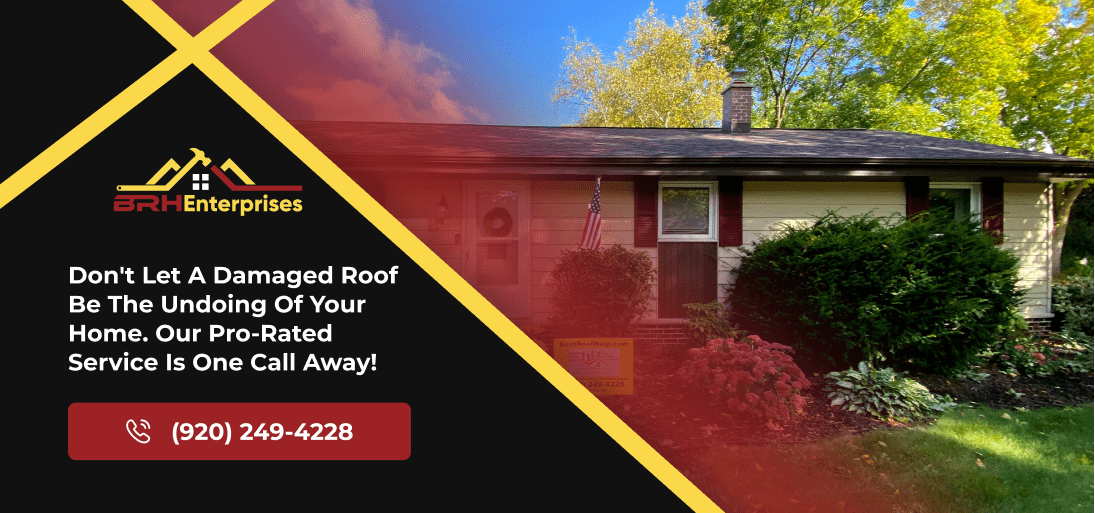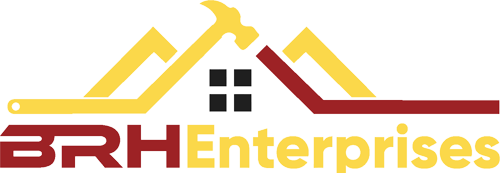What Is Roof Decking? Types & Cost
Estimated Reading Time : 6 Min.
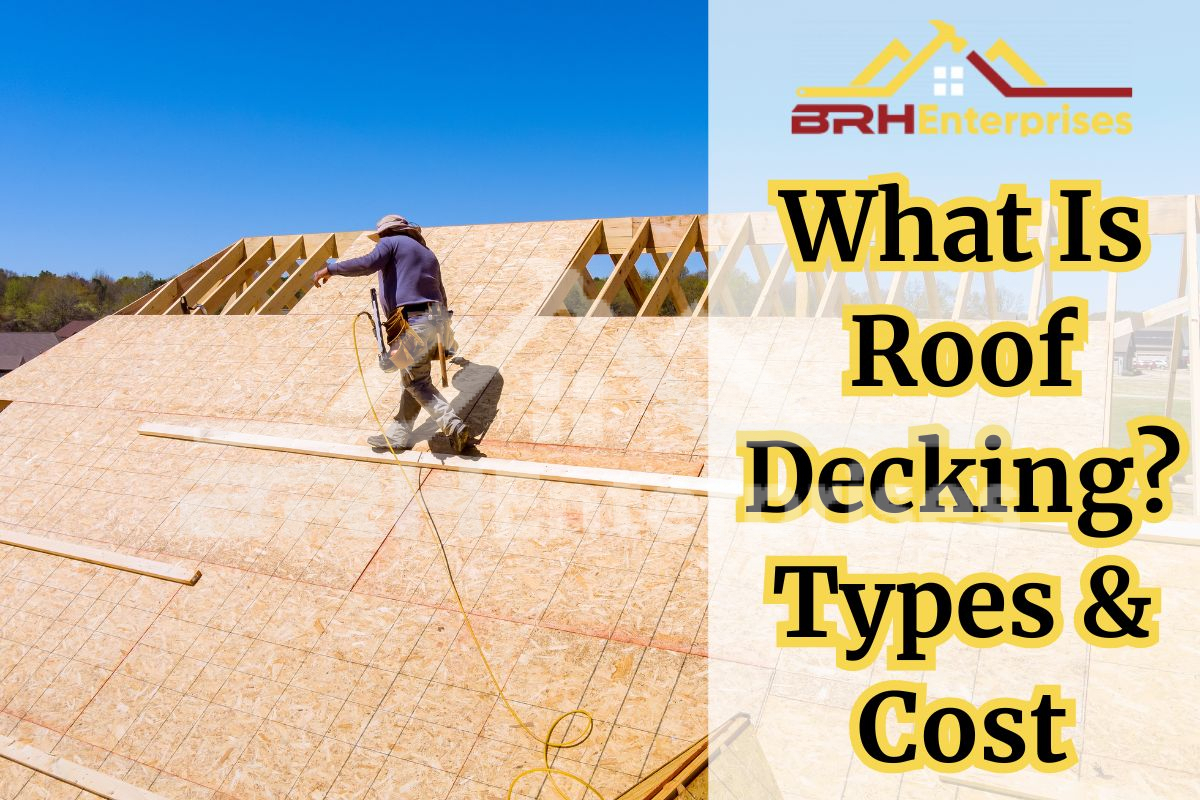
Your roof isn’t just the top layer of shingles. It’s a mix of different parts that work together to keep your home safe from the weather. One important part is the roof deck, which acts as the foundation of your roof, supporting your home’s structure and keeping it protected. In this blog post, we’ll explain what roof decking is and go into detail about the different types that are available, and the replacement process.
What Is Roof Decking?
Roof decking, also known as roof sheathing or the roof deck, is the layer installed between the structural components of a roof, such as joists or rafters, and the outer waterproofing materials like shingles or tiles.
It’s placed directly above the roof trusses or rafters and provides a flat, sturdy surface that supports the entire roofing system. This layer of decking, typically installed in large, overlapping sheets, ensures structural integrity by evenly distributing the weight of the roofing materials and forming a solid base for installing waterproofing and insulation layers.
A well-maintained roof deck is essential for the durability and weather resistance of the entire roofing structure.
What Are The Different Types Of Roof Decking?
1. Solid Decking
Solid sheathing, also known as sheet decking, is the most common type of roof decking used today. It uses flat sheets of wood like plywood or OSB, placed over the roof frame to create a solid, continuous surface. This strong base supports roofing materials well, prevents sagging, and keeps out air and water. It’s widely used in homes and buildings because it’s durable and works with various types of roofing materials.
2. Open Decking
Open sheathing, or plank decking, uses individual wooden boards or planks spaced apart on the roof’s frame. It’s less common now but was popular in older buildings or for certain styles. While it offers less continuous support than solid decking, it’s still used in historic renovations or special designs that prefer its traditional appearance.
Types of Roof Decking Material
Below are some roof decking options that provide support to residential and commercial construction.
#1. Oriented Strand Board (OSB)
Cost: $1 to $1.82 per square foot
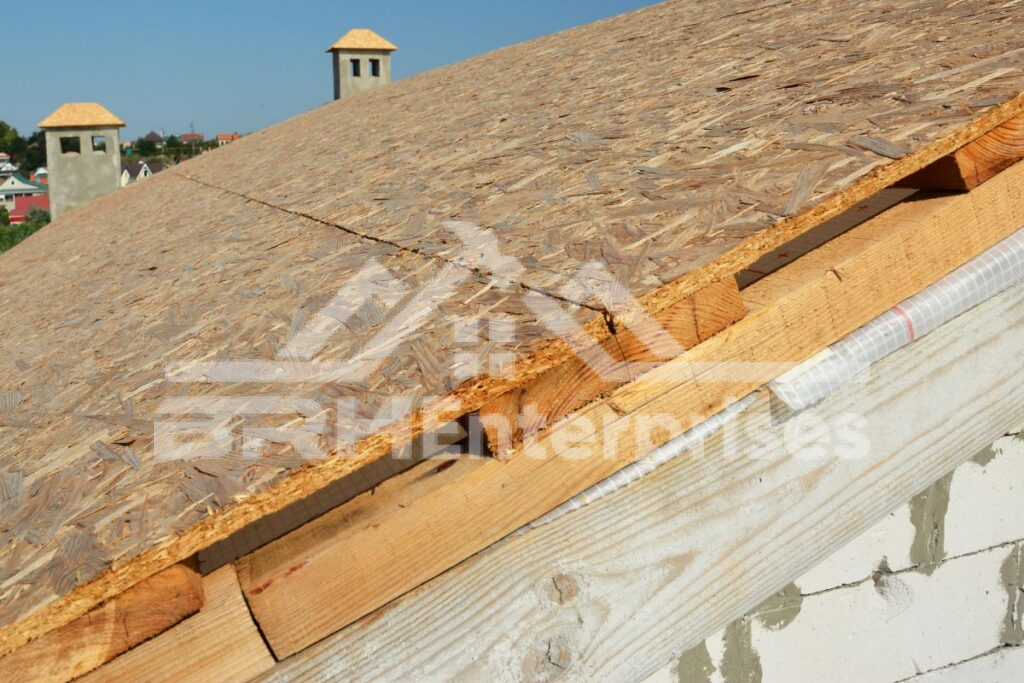
Oriented Strand Board (OSB) is a highly durable engineered wood panel used extensively for roof decking. Created by compressing and bonding wood strands or flakes in alternating layers with resin, OSB offers strength, moisture resistance, and cost-effectiveness as an alternative to plywood.
It’s available in various thicknesses and grades, making it versatile and customizable for specific project needs. Due to its robustness and affordability, OSB roof decking remains the most popular choice for residential homes.
- Consistency: OSB panels are uniform in shape, size, quality, and finish
- Cost-effectiveness: Cheaper than plywood and other materials, ideal for projects on a budget
- Structural strength: Layered design offers strong shear strength for load-bearing uses
- Pest resistance: Naturally repels termites and wood-boring insects, boosting the roof’s durability
- Large panel sizes: Larger than plywood, with fewer seams for more efficient installation
#2. Metal Decking
Cost: $3 to $7 per square foot
Metal decking, typically steel or aluminum, is favored in both commercial and industrial construction for its strength, durability, and fire resistance. Available in different profiles, it supports heavy loads and withstands harsh weather. In commercial steel construction, these are installed directly over steel supports.
These corrugated panels provide a sturdy foundation for insulation, weatherproofing, and other roofing materials. With a high strength-to-weight ratio, metal decking spans longer distances and carries heavier loads than alternative materials, ensuring reliable and robust roofing systems.
- High Strength: Handles heavy loads without frequent repairs
- Easy Installation: Pre-cut and easy to handle, minimizing construction disruptions
- Versatility: Available in various profiles and gauges for specific project needs
- Fire Resistance: UL-rated fire resistance enhances building safety
- Weather Protection: Shields against wind, supports insulation for weatherproofing
#3. Plywood Roof Decking
Cost: $0.50 to $2.00 per square foot
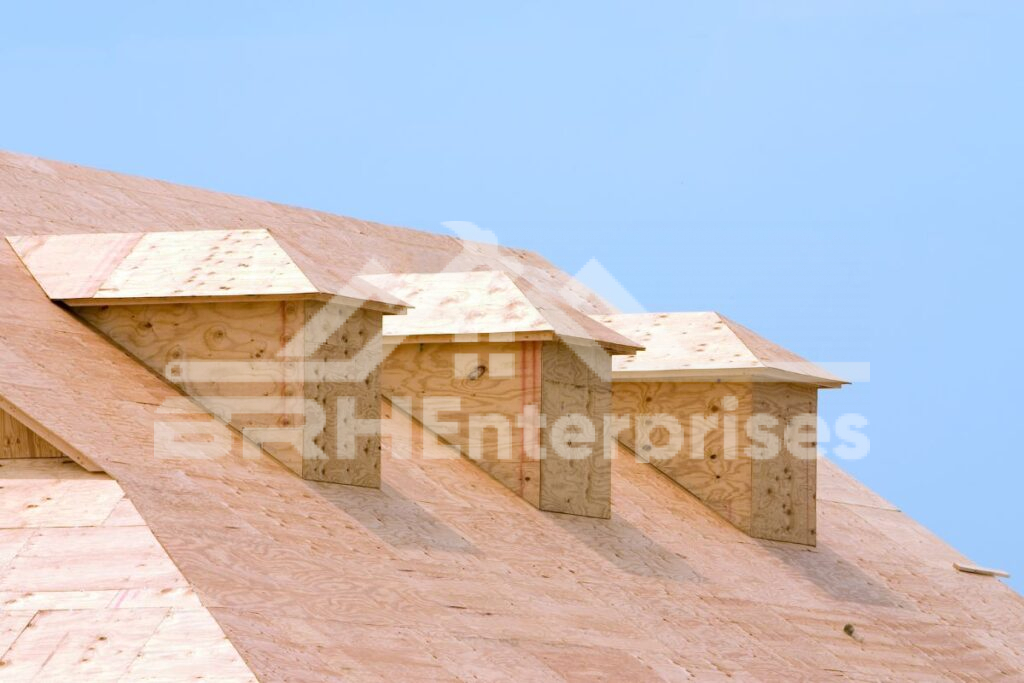
Plywood roof decking is a traditional and popular choice for providing a sturdy foundation for roofing systems. It is composed of thin, composite wood layers that are adhered together in a specific way in order to prevent warping.
This process creates a strong, stable, and moisture-resistant panel. CDX plywood, the most commonly used type for roof decking, is designed for use in exterior applications and serves as a protective layer that can withstand severe weather conditions.
- Structural Strength: Plywood resists bending and sagging, making it ideal for diverse roofing designs
- Moisture Resistance: Withstands moisture well, reducing rot and decay, especially in humid areas
- Longevity and Durability: Offers a long service life with proper installation and maintenance
- Versatility: Comes in different thicknesses and grades for various roofing needs
- Aesthetic Appeal: Provides a more attractive finish that suits many architectural styles
#4. Wood Plank Decking
Cost: $3 to $6 per square foot
Wood plank decking remains popular for outdoor decking projects due to its natural aesthetic appeal and durability. These decks offer a classic, timeless look that can complement a variety of architectural styles and outdoor settings.
Also known as tongue-and-groove decking, wood plank decking is a traditional roofing material made from solid wood boards, typically 2×6 or 2×8 in size. These roof decking boards are connected using a tongue-and-groove joint, creating a tight, seamless fit.
Known for its durability and aesthetic appeal, wood plank decking is often used in historic or traditional-style buildings.
- Strength and Durability: Hardwood types like cedar and redwood resist weathering, rot, and insects. Proper care ensures longevity
- Ease of Repair: Damaged boards are easily replaced, keeping the deck well-maintained
- Sustainability: Many species, like cedar and redwood, are renewable, making wood an eco-friendly choice
#5. Concrete Decking
Cost: $2 to $10 per square foot
Concrete decking is another extremely durable option for roof decking, often only used for commercial and industrial buildings that require significant structural integrity and fire resistance. Made from reinforced concrete, it is known for its strength, durability, as well as resistance to weathering and environmental factors.
These decks involve the use of a concrete slab as the roof’s foundation, with the mixture composed of sand, cement, and water, which dries into a solid, durable material. The final product is a roof that is exceptionally durable, non-flammable, and requires less maintenance than other options, as power-washing can be done without damaging the surface.
- Durability and Longevity: Extremely long-lasting, with a lifespan of decades. Non-flammable, aiding fire prevention on roofs
- Low Maintenance: Requires less maintenance than other flat roofing options
- High Structural Strength: Provides strong structural support and a high strength-to-weight ratio
Steps Involved in Roof Deck Replacement Process
Over time, the roof decking will begin to deteriorate, which is why it’s important to know what to do when it comes time to make a replacement. Keep in mind that while this process is outlined below, you should hire a professional contractor to complete the job and ensure everything is up to standard.
1. Remove The Old Roofing Material
- Carefully dismantle all existing roofing materials, including shingles, underlayment, and flashing, ensuring the roof deck is fully exposed. Dispose of old materials responsibly following local waste disposal regulations.
2. Inspect and Replace The Roof Deck
- Assess Deck Condition: Thoroughly examine the roof deck for any signs of damage, rot, or structural issues.
- Replace Damaged Sections: Replace any compromised sections of the roof deck, whether it is individual boards or entire sections, ensuring compliance with building code requirements for thickness and spacing.
3. Install Underlayment
- Apply A Moisture Barrier: To enhance protection against water infiltration, apply a new moisture-resistant underlayment over the repaired roof deck.
4. Install New Roofing Material
- Select Roofing Material: Choose and install the selected roofing material (shingles, metal panels, tiles) over the prepared roof deck and underlayment.
- Follow Manufacturer Guidelines: Adhere strictly to manufacturer guidelines during installation to ensure a secure and durable roofing system.
5. Final Inspection
- Conduct A Comprehensive Inspection: Perform a detailed final inspection to verify compliance with industry standards, building codes, and manufacturer specifications.
- Address Any Identified Issues: Resolve any deficiencies or issues as soon as possible during the final inspection to ensure project completion meets all requirements.
Factors Influencing The Total Cost To Replace Roof Decking
Several factors influence the total cost of replacing the roof deck, including:
- Roof Size: Larger roofs generally incur higher overall costs.
- Decking Thickness: Thicker decking will be more expensive, but offers increased durability.
- Old Roof Removal: Removing the existing roofing materials adds $1 to $3 per square foot.
- Rafter Replacement: Replacing rafters can cost between $5 to $14 per square foot.
Get Professional Roofing Services In Wisconsin
Roof decking is crucial to the roof’s overall structural integrity and lifespan. Knowing what materials you can choose from and considering the costs involved can help homeowners make the best roofing decisions.
For the best roofing services, choose the team at BRH Enterprises. Our professionals, with a solid reputation for excellence, offer quality solutions for repairs, replacements, and maintenance for roofs across the state. Trust us to deliver peace of mind for your home or business and give us a call at (920) 249-4228.
